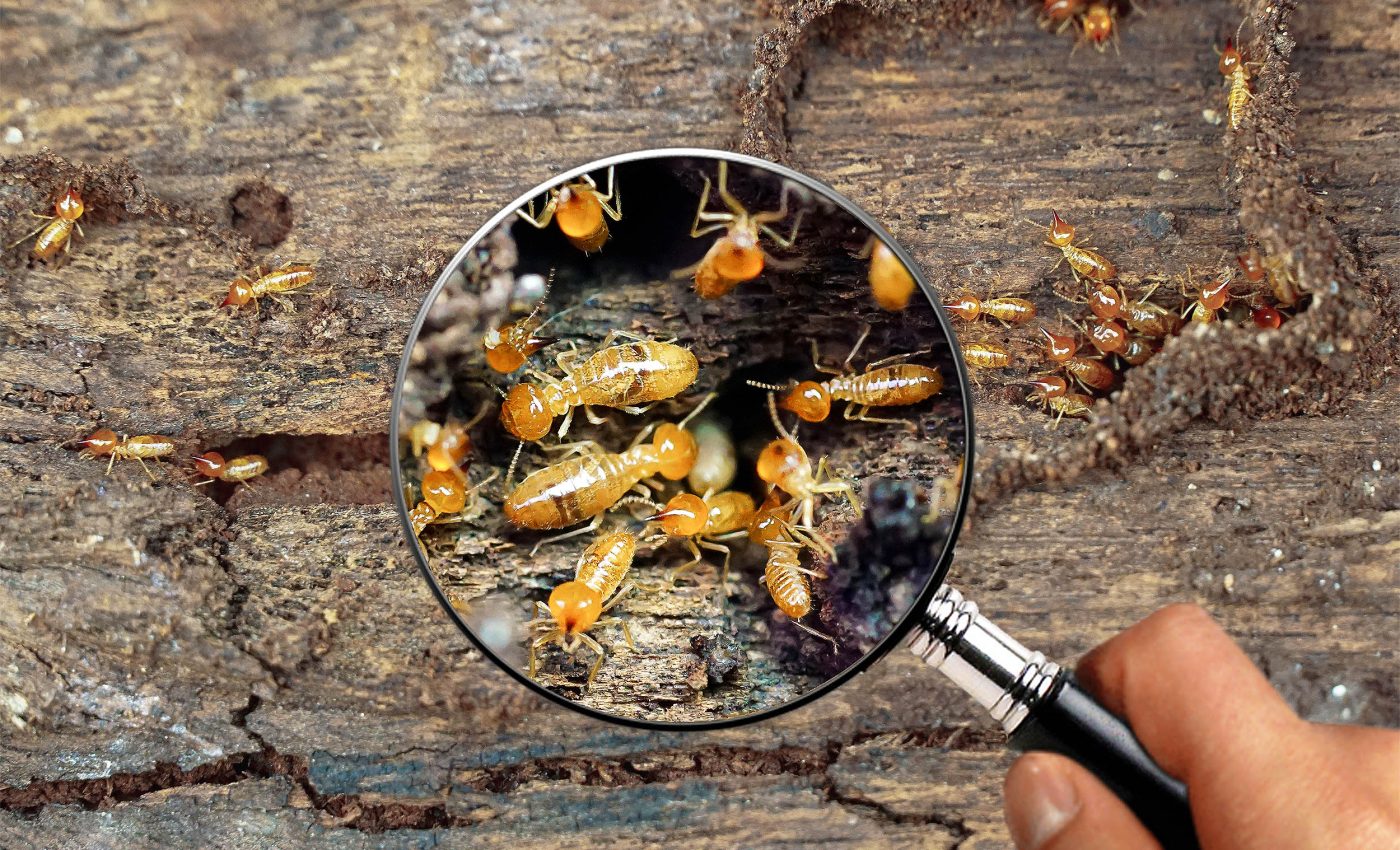
New system attracts and eliminates termites with a natural scent and no toxins
Sagging beams and hollow‑sounding walls can signal a menace that quietly drains bank accounts around the world – termites. Building owners and insurers spend close to $5 billion a year fixing damage and fighting infestations.
Now, a team of researchers led by Dong‑Hwan Choe at the University of California, Riverside (UCR) say they can coax the culprits to a pinpoint dose of insecticide by copying the smell of their favorite meal.
How termites cause problems
The western drywood termite, Incisitermes minor, thrives along the Pacific Coast and has hitchhiked as far as Florida, Georgia, and even Ontario.
Its colonies live entirely inside dry wood, so they can chew unseen for years before a blistered board betrays them.
Beyond structural headaches, the insects recycle fallen trees in forests, yet in houses the same appetite leaves rafters brittle and doorframes warped.
Because they need no soil contact, second‑story condominiums and attic beams are just as vulnerable as ground‑floor studs.
Field surveys show overlapping termite colonies are common in older buildings, compounding the pace of destruction. Inspectors have documented boards reduced to paper‑thin shells while the painted exterior looked intact.
When swarming season peaks, thousands of alates emerge through ventilation gaps, searching for new lumber to colonize. A single missed pair can restart the cycle inside a freshly repaired wall.
Why fumigation falls short
The go‑to remedy, whole‑structure tenting, bathes a building in the gas sulfuryl fluoride, a pesticide that lingers in the atmosphere for roughly forty years and traps heat far more effectively than carbon dioxide.
Homeowners must vacate for several days, double‑bag food, and trust that every gallery fills with gas, yet the treatment leaves no residue to deter the next swarm.
California alone releases up to 85 percent of U.S. sulfuryl fluoride emissions, underscoring the climate cost of repeat tentings.
Each fresh infestation starts the clock, forcing many coastal residents to pay for fumigation every three to five years.
A scent straight from the forest
Pinene is the crisp aroma wafting from pine needles and conifer sap. For termites the smell signals digestible cellulose rather than festive wreaths.
“Even at low concentrations, pinene is good at attracting termites from a distance,” said Choe.
Her team reasoned that drifting molecules could guide workers through their winding tunnels toward a precisely drilled injection point.
Even at parts‑per‑billion levels, the compound spreads faster in air pockets than liquid insecticide can seep through wood fibers.
Testing on termites in the lab
The experiments, paired a fipronil plug with an identical plug laced with pinene to mimic local injections in framing lumber.
Termites released into artificial galleries quickly left their aggregation sites and contacted the treated zone.
“Without pinene, we got about 70 percent mortality. When we added it in, it was over 95 percent,” said Choe.
Video tracking showed most workers reached the scented plug within six hours, and all feeding halted long before visible signs of distress appeared.
What homeowners can expect
Because the method relies on localized injection, technicians need only a few dime‑size holes instead of circus‑style tarps and warning placards.
Treated wood stays guarded for years because tiny doses of insecticide remain locked inside the lumber.
The active ingredient, fipronil, can harm aquatic invertebrates at concentrations below 7 micrograms per liter.
Embedding the chemical in structural beams slashes the chance of runoff or drift, giving the protocol an environmental edge over perimeter sprays and soil drenches.
Early budget modeling by the research group suggests the scent‑boosted injection could cut treatment expenses by half compared with a typical fumigation, since there is no hotel stay, tent rental, or food disposal.
Contractors also gain scheduling flexibility because residents do not need to vacate, and weather delays become less critical when tarps are no longer part of the plan.
Looking ahead for safer pest control
Choe’s laboratory is cataloging other tree volatiles to see whether termite preferences shift with geography or seasonal wood chemistry.
Matching the lure cocktail to local diets could push effectiveness even higher without raising insecticide doses.
Collaborators in Florida and Japan are testing the approach against Formosan and powderpost drywood relatives, signaling a future where pest management leans on insect noses more than broad‑spectrum gases.
If regulators approve the formulation, builders may someday treat critical beams during construction, turning the lumber itself into a long‑term shield that keeps houses solid and the climate a little cleaner.
The study is published in the Journal of Economic Entomology.
—–
Like what you read? Subscribe to our newsletter for engaging articles, exclusive content, and the latest updates.
Check us out on EarthSnap, a free app brought to you by Eric Ralls and Earth.com.
—–













